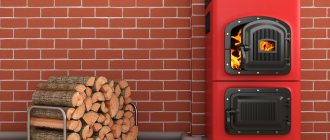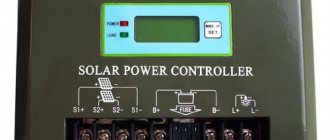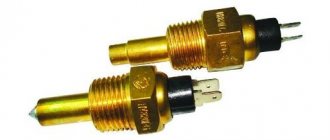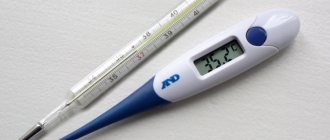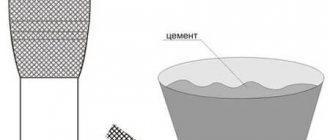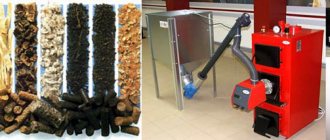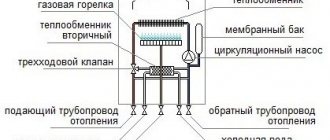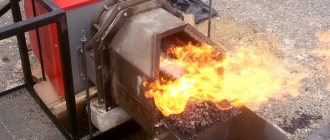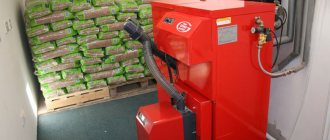- DIY pellet burner: quick assembly and process automation
- Why do you need a pellet burner: features of the device
- Pellets: what is it? Detailed fuel characteristics
- Design features of pellet burners
- DIY pellet burner: varieties
- Gravity pellet burner: design features
- How to draw a drawing of a pellet burner?
- DIY pellet burner: preparatory stage
- How to make a homemade pellet burner: basic recommendations
- Making a hopper for a pellet burner with your own hands
- Further arrangement of a pellet boiler with your own hands
- How to automate the process and configure a pellet burner yourself?
- Pellet burner Zota Fox 25: reliable and efficient model with wide functionality
- Automatic pellet burner Teplodar APG-25
- Video: DIY pellet burner
DIY pellet burner: quick assembly and process automation
A pellet burner is installed on a solid fuel boiler and is used to organize space heating. It can be purchased ready-made, but it is quite expensive. If necessary, such a device can be made independently. A DIY pellet burner can be made from different materials and have both a simplified and a more complex design.
Burner for testing: varieties, device, how to make it yourself (read more)
The pellet burner is installed on a solid fuel boiler and can be made by hand.
Brief overview of imported products
A foreign alternative to domestic products is the Kiturami pellet burner , the list of its characteristics is as follows:
- power range – from 8 to 33 kW;
- Product efficiency is up to 95%, the overall efficiency value depends on the design of the boiler;
- remote controller;
- sensors for temperature, water level, overheating, overflow of auger with granules;
- self-cleaning grate.
The disadvantages of this device are its high cost and dependence on the reliability of the power supply. Otherwise, the product is quite reliable and does not cause any complaints; it is equipped with DRAGON KRP solid fuel installations.
Ferroli pellet burner
The Ferroli Sun P7 and Sun P12 pellet burner, which is installed on solid fuel units BUDERUS and SFL, is no less highly reliable. Maximum power is 34 and 55 kW, respectively, the set of options is the same as that of the previous manufacturer. The fan is a centrifugal type that provides a sufficient amount of air.
The imported Pelltech pellet burner has a wide range of available capacities, from 20 kW (Pelltech PV-20) to 1 MW (Pelltech PV-1000). It works well in conjunction with VIESSMANN boilers; the latter’s delivery package includes, as an option, a gas cleaning unit with a smoke exhauster; it is needed for installations with a power of over 200 kW.
Why do you need a pellet burner: features of the device
Pellets are a fuel that is of high quality and can compete with conventional firewood. To produce such raw materials, wood and agricultural waste, as well as peat, are used. Pellets are small granules.
The operating principle of a pellet burner installed in a boiler.
What is the advantage of such pellets over standard types of fuel? First of all, it is necessary to note the high efficiency of raw materials. Ordinary firewood, after burning, releases from 40 to 80% of its energy. The remaining material is recycled, so the economic feasibility of such heating is questionable.
A boiler with a pellet burner allows you to increase material recycling up to 90%. This is one of the highest combustion rates among all types of fuel. It is worth noting that granulated raw materials are not recommended for use for some types of boilers. For example, such fuel can harm equipment whose operating principle is based on pyrolysis.
On a note! When choosing a burner, you need to pay attention to its power. Today you can purchase models that automatically adjust this indicator. An example is the Zota pellet burner.
During fuel processing, the temperature inside the burner can reach 1000 °C. It follows that extreme caution must be exercised when using such a device. This is especially true for do-it-yourself designs. Errors in assembly or improper use may result in a fire.
During operation of a pellet burner, the temperature inside it can reach 1000º.
Device design
Let's consider the design of the device using the example of the APG-25 automatic burner, developed by Teplodar engineers. The main elements are a collapsible pellet hopper, a feeding auger, and a built-in control panel.
The design is constantly being improved to improve its efficiency. During recent developments, the following improvements have been made to it:
- introduction of a flat-section pulling auger to add rigidity and stability to the burner when using pellets of different fractions;
- adding a cover to the loading device tray to further strengthen the structure;
- changing the geometry of the burner grate and fryer in order to reduce fuel consumption;
- use of a screw shaft support made of a caprolon bushing to protect the motor from dust and reduce the bending load on the screw.
Pellets: what is it? Detailed fuel characteristics
This raw material is characterized by high energy intensity. It is thanks to this that it has become widespread. When processed, one kilogram of granulated pellets releases approximately 5 kW/h of heat. It follows from this that to organize the heating of a standard private house with average dimensions, you will need about 2 kg of material per hour.
Pellets for the burner are loaded into the device approximately 1-2 times a day. When loading a new portion of raw materials, it is recommended to clean the ash pan from combustion products. Store-bought burners require weekly cleaning, and homemade devices get dirty even faster. It is recommended to clean a home-made device approximately once every 3 days. Otherwise, it will fail quite quickly.
Some burner models do not require loading for 5 days. An example is the APG-42 pellet burner. This model is compatible with Teplodar-Cooper boilers.
The disadvantage of pellet burners is reverse combustion, which is accompanied by the penetration of the pyrolysis zone into the bunker intended for storing and supplying fuel. This entails smoke in the room in which the heating equipment is located, and there is also the possibility of a fire.
Pellets are small granules that are made from wood and used as fuel.
Pellets made from sawdust or any other processed waste can be blown away if there is excess air in the structure, which will lead to the generation of a large amount of waste (ash). The air supply must be clearly regulated, otherwise not only its excess, but also its deficiency can lead to ineffective operation and rapid clogging of the device.
The need for granular fuel in air is determined primarily by the combustion mode. Selecting the right regimen is a primary and very important task. The burner enters operating mode in 5 stages. Before starting to operate the device, you must become familiar with each phase in more detail.
The first step is to ignite. The burner for a pellet boiler is ignited using a special ceramic lighter rod, which, when turned on, heats up to a very high temperature (900-1100 °C). Devices made by yourself can be ignited with an ordinary torch.
On a note! Under no circumstances should flammable liquids be used to ignite the burner. In this case, the combustion process will immediately go into the bunker, resulting in a fire.
When burned, 1 kg of pellets releases approximately 5 kW/h of heat.
The second stage of preparing equipment for operation is startup. It is very important to adjust the correct air supply to adjust the burner flame. Next, the device is overclocked. At this stage the burner enters normal operating mode.
After acceleration, it is necessary to adjust the air so that the correct temperature of the coolant in the return is set inside the device. Then you need to stop the supply of granular fuel and set the required air intensity.
Correct boiler settings
When buying a pellet boiler, first of all you need to pay attention to the availability of service centers and official representative offices in the region where the boiler is installed. The pellet boiler is fully automated and requires proper configuration and maintenance. Correctly setting up the boiler will increase its service life, reduce fuel consumption and simplify cleaning the boiler. Start-up and commissioning of this kind of automated equipment must be carried out by a specialist authorized by the manufacturer. In fact, there are no restrictions on starting the boiler and putting it into operation; this procedure can be performed by the installer who installed the heating system, and of course by the user himself. But in this case, all responsibility and further maintenance falls on the person who carried out the launch.
What is important to know to set up a pellet boiler yourself? First of all, you need to understand that an automatic pellet boiler has several operating modes. The most basic and those that require more attention are three: Ignition, Work, Pause. Boiler manufacturers use different types of automation in which all kinds of additional modes can be used, such as: Combustion Stabilization Mode, Modulation Mode, Supervision Mode, etc. When we already have an idea of the modes, it is important to understand how the boiler should behave in each mode.
Ignition mode - when a certain portion of pellets is supplied to the burner using an igniter, or in manual mode it is ignited and complete combustion is stabilized. The boiler usually spends about fifteen minutes in this mode, during which time it also supplies pellets in certain portions, while the boiler automation monitors the temperature of the flue gases. In this mode, it is very important to set up a sufficient amount of pellet supply and air injection so that the temperature of the flue gases rises rapidly. After the flue gases reach 60 degrees, the chimney is considered warmed up, and the automation switches the boiler to Operating mode.
We recommend: Heat-resistant paint for metal for furnaces: types of heat-resistant paint up to 1000 degrees and features of use
The operating mode is very similar to the ignition mode. The boiler spends most of its time in this mode. It is at this time that it heats the boiler heat exchanger and brings the temperature in the heating system to the set temperature. During our work, we no longer need to quickly warm up the chimney. Our task is to achieve correct and complete combustion of pellets, a stable and clean flame. Two parameters are subject to adjustment: air blowing power and the number of supplied pellets. The air power is usually regulated in a ratio from 30 to 100 percent, the number of pellets supplied to the burner is regulated in a cyclic ratio, and after a certain period of time a certain portion of pellets is supplied. It is important to understand that the portion of burned pellets corresponds to the declared power. For example, a fifty kilowatt boiler will not be able to provide heat to the room if the supplied pellets are too small, even if the flame is stable. The average heat transfer of pellets from one kilogram when burned can produce up to five kilowatts of thermal energy per hour. The quality of the fuel can greatly affect the consumption of pellets, and in some boilers, the operation of the burner.
Manufacturers of pellet boilers provide standard operating settings. Each power has its own number of pellets per hour and its own air blowing power. Our task as a user or boiler setup specialist is to adjust these parameters so that pellet combustion is complete and consumption is minimal without loss of boiler performance.
This begs the question, where to start setting up a pellet boiler?
We recommend that you first start by adjusting the air and blowing power of the fan. The blowing power may vary for each boiler; it is usually influenced by a number of factors, such as chimney draft, pellet quality and even burner type. The amount of air pumped into the burner should be the minimum necessary for complete combustion of the fuel. This can be determined by the color of the flame.
The correct flame has a yellowish tint, the flames rise upward, the combustion is even, high and stably kept at the same height. It is in such a flame that maximum efficiency is achieved.
Is the flame reddish with noticeable smoke? There is not enough oxygen for combustion; this can be affected by both an incorrectly installed chimney and too little air blowing power. Try adding blowing power and observe the result.
If we observe an aggressive flame, and pellet coals jump up and fall into the ash pan as unburnt pellets, there is too much air blowing, we recommend reducing the air to the minimum required for combustion.
After the flame has been normalized and it meets all the parameters of proper combustion, it has a yellowish tint. Let's move on to adjusting the auger feed. As mentioned above, the auger operates cyclically, feeding certain portions into the burner. Before setting up the auger feed, you need to understand what type of burner your boiler has. A torch burner requires the minimum required number of pellets when burning, so that the pellets do not clog the air supply holes. In such burners, pellets are usually fed in small portions. If we are dealing with a retort burner in the form of a bowl with bottom fuel supply. Here the fuel supply occurs somewhat differently; the pellets supplied from below constantly raise the combustion. Our main task is to adjust the optimal supply of pellets to the burner so that the fuel during combustion is always at the same level. Combustion should occur in the upper part of the burner, and the pellets should not spill over the edge of the burner or sink below the level.
After we managed to select the ratio of pellet supply and air inflation, we should observe the temperature of the water in the system, whether it tends to the set one, and at what speed. Is the boiler gaining temperature very slowly or is the temperature stuck in one place? This means that the boiler is not operating at rated power; it is necessary to add fuel supply and adjust combustion.
We recommend: How to choose a turbocharged gas boiler: differences between turbo boilers and atmospheric boilers, design and principle of operation, review of the best models, prices and reviews, where to buy
The final mode is Pause or Stop mode. The pellet boiler goes into this mode when the set task, namely the set temperature, has been achieved. In this mode, the boiler completely turns off the operation of the auger and fan, and waits for the water temperature in the system to drop by several degrees, after which it starts working again, before checking the combustion.
The question is very often asked: Is it necessary to reconfigure the boiler when changing fuel? If these are fundamentally different fuels then - Yes.
For example: We made a tincture using wood pellets, and a little later we decided to switch to husk pellets. Husk pellets burn a little faster than wood pellets and the feed ratio of the auger to the fan needs to be changed.
If the fuel is simply from different batches or from a different manufacturer, then only a slight adjustment of one of the parameters will be necessary. Pellets may differ in density, humidity, calorie content, as well as ash content and the likelihood of caking and cake formation.
Pellet boilers have gained popularity in the line of solid fuel boilers due to their autonomous operation and convenient operation. Such boilers can work from 2 to 10 days on one loading of the bunker and with cleaning the boiler every 4-5 days, while a long-burning boiler with automation will not last even 24 hours and needs regular cleaning before each loading of firewood. However, pellet boilers require proper tuning and it is better to entrust commissioning work to a specialized organization. A properly configured boiler will easily develop the specified power, and the savings on pellets will pleasantly surprise you.
Design features of pellet burners
The main task of any burner is to ensure uniform heating of the boiler. This goal is achieved through the processing of granular fuel. From a structural point of view, the burner is a combustion chamber, which most often resembles a pipe in shape. Combustion inside such a device occurs due to the continuous supply of air.
Fuel delivery is carried out by a special device - an auger. To pump air into the structure, a fan is provided, the operation of which does not allow the flame to go out. The burner can have a variety of shapes, which does not significantly affect the efficiency of the device. Chambers that have a round cross-section are the most common. This is due to the fact that they are the easiest to make. However, rectangular options are also quite common.
The device of a pellet burner, where 1 – LCD display, 2 – control knob, 3 – backup battery, 4 – connecting connector, 5 – fuel level sensor, 6 – safety thermal relay, 7 – photosensor, 8 – internal auger motor, 9 – igniter , 10 – internal auger, firebox, 11 – combustion grate, 13 – fan.
Round burners used for pellet processing have a flat base. It is used to accommodate fuel and is mounted externally to the front surface. It is worth noting that some burners have the ability to connect a GSM module. An example is the Terminator 15 pellet burner. Its cost is approximately 75 thousand rubles.
The operating principle of these devices is quite simple. First, the sawdust is loaded into the hopper, after which it is delivered through the channel to the burner. A fan blows air to maintain the required flame level inside the device. Combustion products accumulate in the ash pan. It is recommended to clean this compartment at least once a week.
Review of popular domestic manufacturers
The products of the domestic brand PELLETRON are distinguished by their simplest design and low cost. They are absolutely independent of electricity and work perfectly in the presence of good natural draft. That is, to achieve maximum power of the burner device, the vacuum in the boiler furnace must be 20 Pa, which can only be ensured by a properly constructed chimney. An atmospheric pellet burner for a solid fuel boiler Pelletron-15 can be installed on almost any unit with your own hands; you just need to cut a rectangular opening in the loading door. The product is inserted into it and secured to the door with screws from the inside; grates and other parts are removed from the firebox space. They can be returned to their place at any time if necessary.
Thus, the advantages of the model also include low weight and ease of installation. However, there are also disadvantages:
- There is no automatic ignition system; for this you need to use a special cylinder with flammable liquid and a nozzle.
- Power is adjusted manually.
- High demands on the natural draft force of the chimney.
- The power of the product is limited to 15 kW; the design of the Pelletron-15 pellet burner using conventional draft does not allow its use in more powerful boilers.
- The manufacturer requires cleaning the chamber and grilles once a day.
DIY pellet burner: varieties
Devices that are used for processing granular raw materials are divided into two types depending on the principle of operation - with forced intake and gravitational. The choice of one type of equipment or another depends primarily on individual operating conditions.
On a note! The most common burner option requires the presence of electricity. In this case, electricity is necessary to operate the mechanism that ensures an uninterrupted supply of granular fuel. Automatic pellet burners (with forced intake) are considered the optimal solution for organizing heating of a building.
At the moment, pneumatic pellet burners from Obshchemmash are popular.
Devices of this type include several mechanisms through which granules are delivered. The first of them operates using a pneumatic system. The second mechanism is equipped with a special tool - a screw. Safety in the system is ensured by the design of the channel, installed from the bottom up, through which the granules are supplied.
Automatic devices have one serious advantage - fire safety. Such devices are used in equipment from different manufacturers. For example, they are integrated into Teplodar boilers. Pellet burners, reviews of which are mostly positive, are quite expensive. The price of some models exceeds 150 thousand rubles. More budget options can be purchased for 60-80 thousand rubles.
The pneumatic type design is characterized by maximum safety. This is because the pellet delivery system delivers fuel in small portions. Thus, it is not delayed in the communication channel. For such a burner, it is possible to install a large hopper that does not require frequent loading. If desired, a device of this type can be purchased. Currently, pneumatic pellet burners from Obshchemmash are very popular.
Screw-type feed mechanisms include two main units. Using the first auger, granulated fuel is taken from the bunker. The operation of this device allows you to transport pellets to another receiver. After this, the second screw sends the raw material directly to the burner.
Automatic pellet burners are characterized by high fire safety.
The disadvantage of devices in which fuel supply is forced is their dependence on energy. In the event of a power outage, the burner stops operating.
Principle of operation
All pellet installations that can be purchased in the store are equipped with additional components:
- Auger – supplies fuel from the bunker to the combustion chamber;
- Controllers for automating the work process;
- Bunker – the place where the fuel is located before being supplied to the combustion chamber;
- A lambda probe is a special sensor that monitors the oxygen content in smoke chambers and independently controls the fuel combustion process depending on conditions.
The pellet burner must be protected with a plastic corrugated pipe. It acts as a fuse when reverse draft occurs. If the fire begins to move towards the bunker, the pipe burns out, preventing the flame from spreading.
Additionally, a fan is used, which enhances the combustion of pellets by pumping air, as well as a thermoelectric heater, which allows the fuel to be ignited without human intervention.
In automated devices, pellets are fed into the combustion chamber automatically; a person is only required to monitor the amount of fuel in the bunker. The need to supply fuel to the combustion chamber is determined using temperature sensors (they can monitor the air temperature in the room, the water temperature, or any other environmental indicators depending on the operating mode of the equipment).
The required temperature of the coolant is set by the user, all further increases and decreases are controlled using automated equipment. As soon as the temperature reaches the set level, the burner begins to operate in standby mode (the pellets do not go out, they begin to smolder). If the temperature, on the contrary, drops, the controller activates the built-in fan. Under the influence of air, the pellets flare up and the burner goes into operating mode. If during downtime the pellets go out for any reason, the heating element is activated, which re-ignites.
Gravity pellet burner: design features
Devices of this type, operating on pellet fuel, have a different operating principle for supplying pellets. It should be said right away that such units are more convenient to use. The main advantage of the gravitational mechanism is that it does not require a connection to the electrical network.
In this case, the pellets are located in a bunker and can enter the connected channel under the influence of their own weight. There are several popular domestic companies producing such units (Pelletron, Behemoth). A pellet burner of this type is started very simply - by changing the position of the damper. It is important to remember that the chimney has a draft regulator, which can also be adjusted.
On a note! The main disadvantage of all gravity structures is that they do not provide as much safety during operation as their counterparts. During operation, there is a possibility of ignition of granulated fuel in the bunker. An increased risk of ignition exists due to the design of the hopper, which is directly connected to the opening through which the fuel is supplied.
Gravity pellet burners can be used without an electrical connection.
The efficiency of gravitational devices is slightly lower than that of analogues that operate through the forced supply of granular fuel. Installing this type of pellet burner is not a difficult task. Its complete connection can be completed in just a few hours.
In order to increase the fire safety performance of this device, many manufacturers install special dampers on it. They are equipped with thermal sensors, which, if a flame enters the channel connecting to the bunker, are activated and block the passage.
How to draw a drawing of a pellet burner?
Before starting to independently design a burner intended for processing pellet fuel, it is recommended to complete its individual drawing. The diagram must necessarily contain information about all components and parts. The drawing requires you to indicate the main elements:
- camera;
- fuel bunker;
- screw;
- fan.
The diagram must contain all the necessary dimensions of these products. When making a drawing of a pellet burner with your own hands, you should remember that the detail of its execution determines how reliable the device for processing fuel pellets will be.
Manufacturing drawing of a pellet fuel burner.
Before starting to draw up the diagram, it is recommended to calculate in advance the required dimensions of the bunker. When performing calculations, you should take into account how much area the structure will heat. It is also worth noting that the parameters of the bunker have a direct impact on the frequency of its cleaning.
The fan operation is controlled by an electronic unit. When drawing up a diagram, you need to remember that the performance of the main components of the device depends on the availability of electricity.
Thus, making a drawing of a pellet burner with dimensions with your own hands is not so difficult. If necessary, you can use a ready-made scheme, of which there are many on the Internet. But in such a situation, it is necessary to select a drawing that will meet specific conditions.
DIY pellet burner: preparatory stage
Before you begin assembling a burner that processes granular fuel, you need to do some preparatory work. First of all, you need to calculate the area that will be heated using this device. Knowing this indicator, it will not be difficult to calculate the required power of the heating device. When calculating the power indicator of a pellet unit, the following factors are taken into account:
- average annual temperature in a particular region;
- building area;
- ceiling height in the building;
- number of door and window openings;
- building materials from which walls, floors and ceilings are made.
Before making a burner with your own hands, you need to calculate the area of the room that will be heated.
Then you should prepare all the tools that will be used when assembling the pellet burner with your own hands. Video and photographic materials help to get an idea of this process, so it is recommended to study them in detail.
It is necessary to determine the thermal transfer resistance of the materials used. This coefficient will be required in the future to calculate heat loss. The power of heating equipment must be at least 10% higher than heat loss.
On a note! There are special online calculators that allow you to determine the power of the boiler. They can be easily found on the Internet using the search bar of your browser.
Experts recommend purchasing ready-made pellet burners. The price of these devices varies from 50 to 200 thousand rubles. Making such a device is quite difficult, since many operational nuances need to be taken into account. Purchased models are also equipped with the necessary thermal sensors, which makes their operation convenient and safe.
Making a pellet burner is a complex and labor-intensive process.
How to make a homemade pellet burner: basic recommendations
The most important structural element that is part of a pellet burner is the basket. When making such an element yourself, you should remember that there is one common problem - granules getting stuck in the back wall, which is located at an angle and has slots. To solve the problem, you need to make the cracks differently. The standard version takes into account continuous slots, but it is recommended to make a more cellular structure.
The ideal size of the rear wall slots should be 2 mm smaller than the size of the secondary fuel pellets. The gap between the back wall and the bottom of the basket must be at least 6 mm. The front wall also has slots, but in this case they must be solid.
Before work, it is recommended to study videos demonstrating the assembly of a pellet burner. Reviews of various home-made devices will also help you choose the right device option.
There is a channel located under the bottom of the basket that is part of the burner. It is necessary for secondary air. The height of the channel should be approximately 29 mm. A deviation of 1 mm is allowed here. The back wall itself is not perpendicular, but at an angle. The tilt angle is 45°.
It is recommended to make the size of the slots in the rear wall of the basket 2 mm smaller than the size of the pellet fuel granules.
The price of a pellet burner purchased ready-made is several times higher than the cost of a prefabricated version. Thus, self-manufacturing of this device allows you to significantly save money.
The size of the basket with tray is selected taking into account individual needs. In this case, it is necessary to focus on the indicator that determines how much fuel will be processed per 1 hour of burner operation. The best option is considered to be a device with dimensions of 13x13 cm. The depth of such a basket should be approximately 10-12 cm. Such a device allows you to burn about 2-3 kg of granular fuel in 1 hour.
Making a hopper for a pellet burner with your own hands
The second necessary element of any burner installed on heating equipment is a hopper. The most common problem that arises during the operation of homemade devices is related to the penetration of flame into this structure. In order to assemble a reliable bunker, it is recommended to use ready-made drawings of popular bunkers from Teplodar or Pelletron. A pellet burner can be made of any power, but it is best to take standard 15 kW devices as an example.
Drawings of a hopper for a 34 kg and 17 kg pellet burner.
The volume of the bunker is also selected individually. You can make a box that will hold 17 or 34 kg of granular fuel. For the manufacture of the combustion chamber, a material such as stainless steel is traditionally used. Moreover, its thickness should be at least 2 mm.
On a note! Steel walls are joined using welding equipment.
The dimensions of the bunker are borrowed from any suitable model (for example, Pelletron 15). The pellet burner includes a secondary air channel, which is best made in the shape of the letter “L”. This will significantly increase the efficiency of the operating device.
In addition, the burner should be provided with air supply. This will make it possible to simplify its launch, since the reaction to draft in the chimney structure will be reduced. For a device with a power of 15 kW, 20 W fans are suitable. Experts recommend purchasing a fan, which is called a snail. This is due to the fact that the operation of such a device is easiest to regulate.
The fan is an important part of the pellet fuel burner, as it simplifies its operation.
Further arrangement of a pellet boiler with your own hands
Assembly of the device body is carried out in several stages. You can handle this task yourself, but you need to clearly understand the nuances of the work. The body is best constructed in a horizontal plane. This is because this arrangement allows for maximum equipment efficiency.
It is recommended to use brick (fireclay) as a material for the manufacture of the body. The process looks pretty simple. It is necessary to assemble the box and place the heat exchanger inside it. It is worth noting that the brick body is made without a top cover. The heat exchanger must have outlets for connecting heat supply pipes.
Do not forget that the burner should be equipped with a special controller. Pellet burners can be completely mechanical, but in this case it is much more difficult to set them up. Regulation is made taking into account the individual characteristics of the device and the area of the heated room.
The use of brick for the installation of the housing is recommended because it has good insulating qualities and is able to accumulate heat to a greater extent than other common materials such as steel and cast iron. Photos of burners and other heating equipment can be easily found on the Internet.
To make a heat exchanger, you need to cut pipes with a rectangular cross-section and connect them together.
First of all, the heat exchanger is manufactured. To do this, you need to prepare pipes with a rectangular cross-section. Then they need to be cut (in accordance with the drawing) into pieces of the required length. After this, the individual segments are connected to each other using welding. It is necessary to provide pipe supply to the heat exchanger. Then a chimney with an ash pan is installed.
How to automate the process and configure a pellet burner yourself?
Homemade pellet boilers have one feature - the absence in the design of a device that provides an influx of natural draft. Without draft, as you know, it is impossible to maintain a flame inside the device, so you will need to install a fan. To ensure uninterrupted operation of the boiler, an auger is also used, which is responsible for delivering fuel from the bunker to the combustion chamber.
In order to fully automate the workflow and, if necessary, achieve its adjustment, you need to integrate a controller into the design. Its role is played by the pellet burner control unit.
On a note! Mechanical control is carried out using a simple regulator.
Using the control unit, you can fully automate the operation of the pellet burner.
The main task to ensure the normal operation of heating equipment is to achieve a balance between two main indicators. The first of them is the volume of granular fuel, and the second is the air intake rate. If you can correctly adjust these indicators, then the flame will evenly heat the heat exchanger.
All necessary indicators can be set using the burner control module. What it is? The control unit provides complete control over the operation of the heating unit. Of course, the best option is to purchase a new device.
Purchased models have the ability to quickly connect to the main working elements of a pellet boiler. As a result, the controller will regulate the supply rate of granular fuel, as well as the fan speed. The display located on the control unit allows you to configure the pellet burner.
It is worth noting that the auger must have a sensor that monitors the need to supply granular fuel. It works as follows: it detects when the auger is full and sends a signal to the equipment. After this, the supply of pellets is suspended.
Using the controller, the speed and volume of pellet fuel supply is adjusted.
Types of products by design
The difference is that you need to burn solid wood pellets instead of gas, which is under pressure. Therefore, the fuel supply system for all pellet boilers is basically the same. The granules are delivered to the burner device from the bunker by a screw conveyor or simply poured if the bunker is located on top of the heating unit. The pellets are moved into the combustion chamber by an internal auger located in the device body. Based on the principle of operation, pellet burners come in several types:
- Volumetric combustion devices (retort type). In them, the flame is directed upward, and the granules are fed by a screw from below. Air enters the combustion zone through holes on the sides of the bowl, in which the process takes place.
- Flare devices are most often installed on boilers in our country, since they are not so demanding on fuel quality. In them, a horizontal auger delivers granules directly into the combustion chamber, through which air is blown by a fan. As a result, a powerful stable flame is obtained at the exit from the chamber.
- Atmospheric devices are characterized by the absence of air injection by a fan and high requirements for the draft force of the chimney. Otherwise, this is the same flare device, an example is the domestic pellet burner Pelletron-15.
Pellet burner Zota Fox 25: reliable and efficient model with wide functionality
This type of pellet burner is used in Zota Fox series boilers. It is used in heating units, the design of which does not include a plate made of cast iron material. To date, such a burner has proven itself only from the best side. It is characterized by efficiency and reliability, as well as a long service life.
The Zota Fox pellet burner processes granular fuel. The size of each pellet used in this case ranges from 6 to 8 mm. The power of this unit is regulated by an automatic system. This indicator may vary (from 5 to 25 kW).
Installing a Zota pellet burner on a solid fuel heating boiler allows you to automate its working process. Equipment equipped with a granule processing unit has certain advantages:
- reduction of heating costs for residential buildings;
- increase in operating time when loading one portion of granulated fuel;
- maintaining the required temperature in the room.
On a note! The power of the burner used for processing pellets is determined depending on the area of the heated room. It is worth noting that a 1 kW device can provide heat to a room of 10 m².
The Zota Fox 25 pellet burner is an efficient and reliable unit.
The burner power is adjusted automatically. For this purpose, the design provides a special control module. Zota Fox pellet burners (5-25 kW) have many additional functions that are easy to activate and configure on the control panel. These include automatic ignition of granular fuel, quick start and stop, automatic cleaning of the burner and other modes.
Safety in such a device is realized by a sensor that regulates the combustion temperature of the fuel. This device can also be connected to a GSM module or thermostat installed in a heated room. The cost of such a burner is approximately 75 thousand rubles.
basic settings
A pellet solid fuel boiler is considered very convenient to use, but unlike other solid fuel models it requires proper configuration. A correctly configured ratio of parameters directly affects indicators such as the power and efficiency of the boiler.
A very common question: is it necessary to reconfigure the boiler when changing a batch of pellets? Yes, your solid fuel boiler using different pellets will work differently. The ratio of components from which pellets are made is different for each manufacturer and therefore the combustion process will also be different.
The principle of a pellet solid fuel boiler is quite simple: a worm mechanism (auger) feeds small granules of compressed wood, coal, biomass, etc. (pellets) into the burner, and air is also forced into it to ensure the required flame power.
Two parameters are subject to adjustment: pellet supply speed and air blowing power. The air supply is adjusted by simply selecting the rotation speed of the blower fan, usually either on a scale from 1 to 10 or in % from 1% to 100% (depending on the model of the solid fuel boiler). The pellet feeding speed is adjusted by increasing or decreasing the period between activations of the worm mechanism. The rotation speed of the screw is always the same.
The amount of air pumped into the burner should be the minimum necessary for complete combustion of the fuel. This can be determined by the color of the flame. A red flame with noticeable smoke is a sign of lack of air. A white flame means the fan is blowing too much air.
The correct flame is yellow. An additional sign of proper air supply is that the flame not only rises upward, but also diverges slightly to the sides.
When adjusting the air supply, do it in the minimum permissible increments. The more accurately you set the minimum required point, the more boiler power and less pellet consumption you will achieve.
First of all, the air supply is adjusted, and then the pellet feeding speed.
The feed rate of pellets into the burner should be optimal. If too few pellets are supplied, then it will be difficult to accelerate the solid fuel boiler to rated power - there will simply be nothing to burn, and if there are too many pellets, then excess fuel will fall out of the burner.
We recommend: Excess pressure relief valve in pipelines: types, selection and installation rules
The APG-25 Teplodar pellet burner is started by pressing the button located on the side of the hopper once. The device is put into standby mode. To go to the main equipment settings, you must simultaneously press the “Left” and “Right” arrows. Secondary parameters of APG-25 are set during heating or maintaining temperature.
The user needs to set two main parameters:
- Feeding time in “Heating” mode
. The default is 9 seconds with a cycle time of 20 seconds. This is a system setting for a 20 kW boiler heating a room of 180-200 square meters. m. If such power is not needed, the indicator is reduced to 5-6 seconds. The feeding time in the “Maintenance” mode is determined automatically. - Fan power
. The user manual indicates which blade rotation power is selected depending on the pellet feeding time. The parameter is set manually. If the fuel supply is short, the fan operates in moderate mode.
The fan power also affects the speed at which ash is blown out of the fryer. For poor quality pellets, it is necessary to set the parameter slightly higher than the table value, in particular, when working in the “Maintenance” mode.
Automatic pellet burner Teplodar APG-25
This device is automatic. It has many advantages. The products of this company are of high quality and have a long service life. A burner of this type is sold together with a hopper, which is delivered disassembled. In addition to the bunker, the kit includes an auger that delivers pellets, as well as a control panel.
This model has many advantages. One of them is ease of installation. If you wish and have certain skills, connecting such a model can be done in just 30 minutes. Teplodar pellet burners require preliminary settings, which are made according to needs. The hopper should not be filled too often (twice a week is sufficient).
Pellet burners Teplodar APG-25 are a high-quality product with a long service life.
In this case, cleaning the ash pan from combustion products is done no more than 2 times a week. As a rule, only once is enough. It is worth noting that, in addition to the APG-25, there are also more powerful modifications produced by this manufacturer. For example, the APG-42 model has become widespread.
These devices are installed on Cooper brand heating equipment. Pellet burners of this type are equipped with an improved auger, thereby increasing the overall reliability of the design and its service life. The control panel has a convenient and clear display, which indicates all the necessary operating parameters of the heating equipment.
Thus, in order to make a burner that processes pellet granules, you must first calculate the power and prepare a drawing. During work, you must be careful, since any mistakes made during assembly of the structure can lead to a fire of the pellets in the bunker.
Operating parameters
The main quality indicator of the APG-25 burner is its power, which determines:
- the number of pellets fed by the auger per unit of time;
- the volume of air entering the chamber.
One of the key parameters of burner operation is cycle time. A unit cycle consists of heating and waiting stages. Therefore, the cycle time is determined by the pellet feeding time in both modes. If the cycle time increases, the amount of fuel supplied and the total burner output decrease. When the cycle time decreases, the opposite situation occurs.
